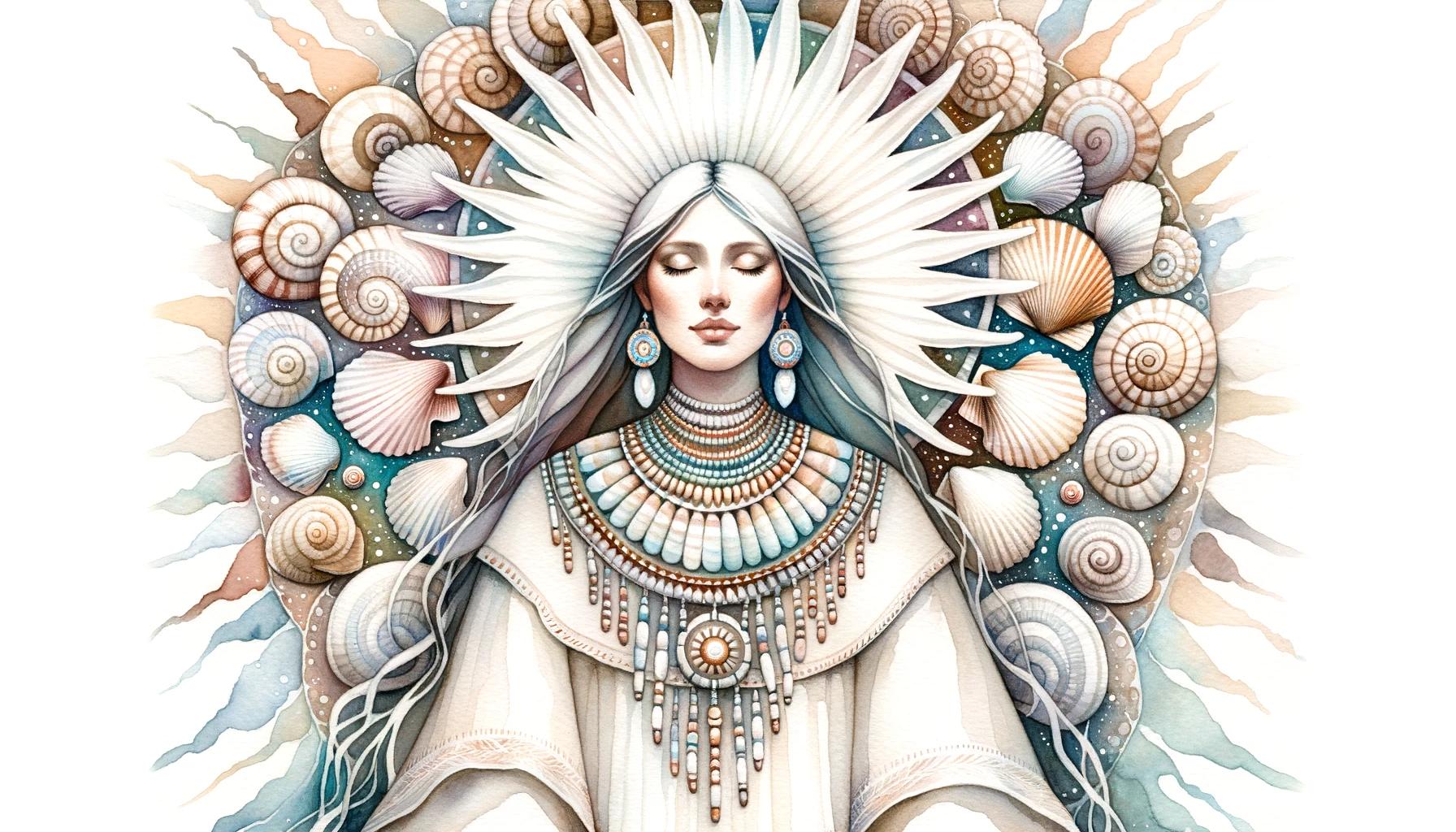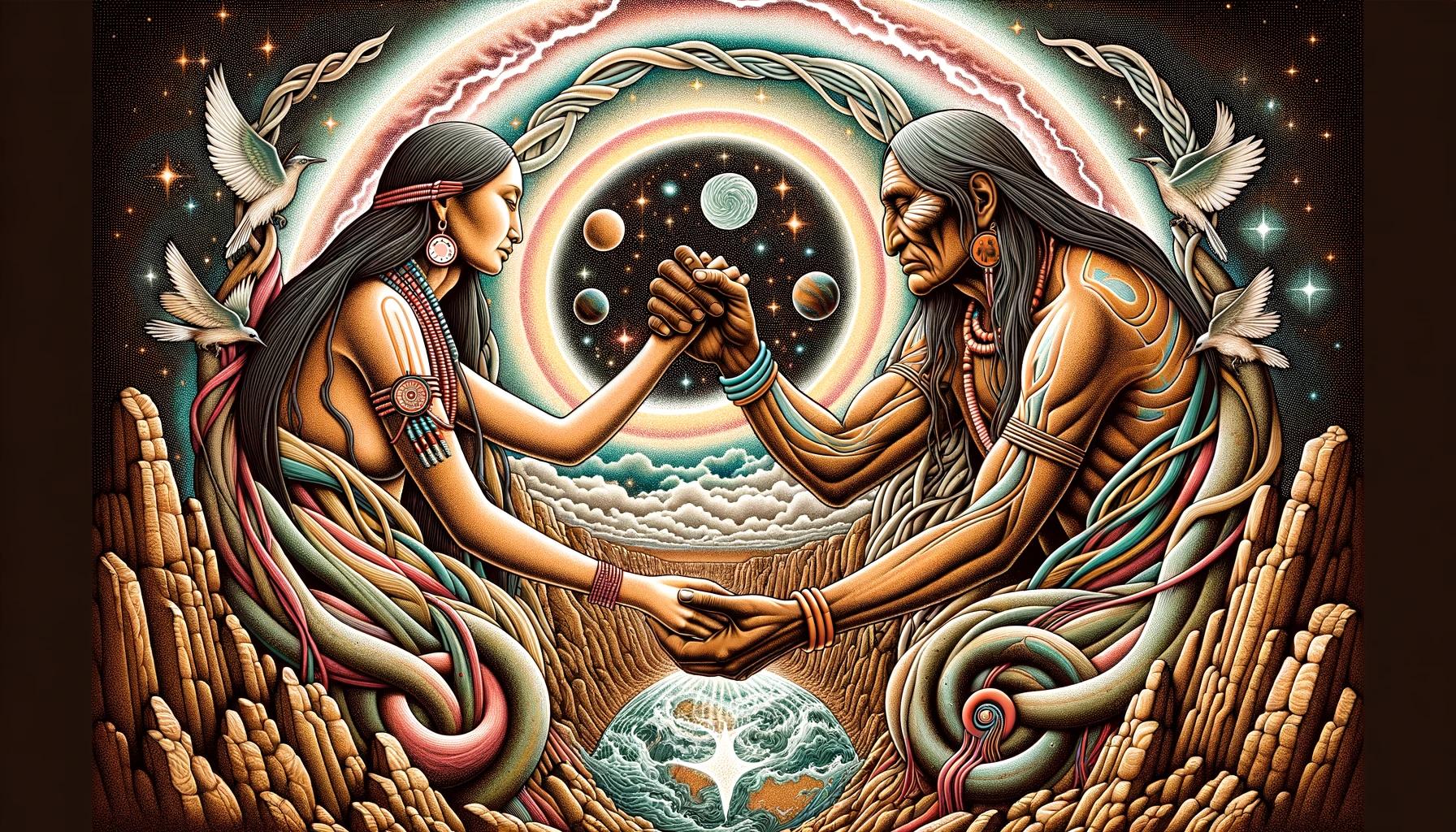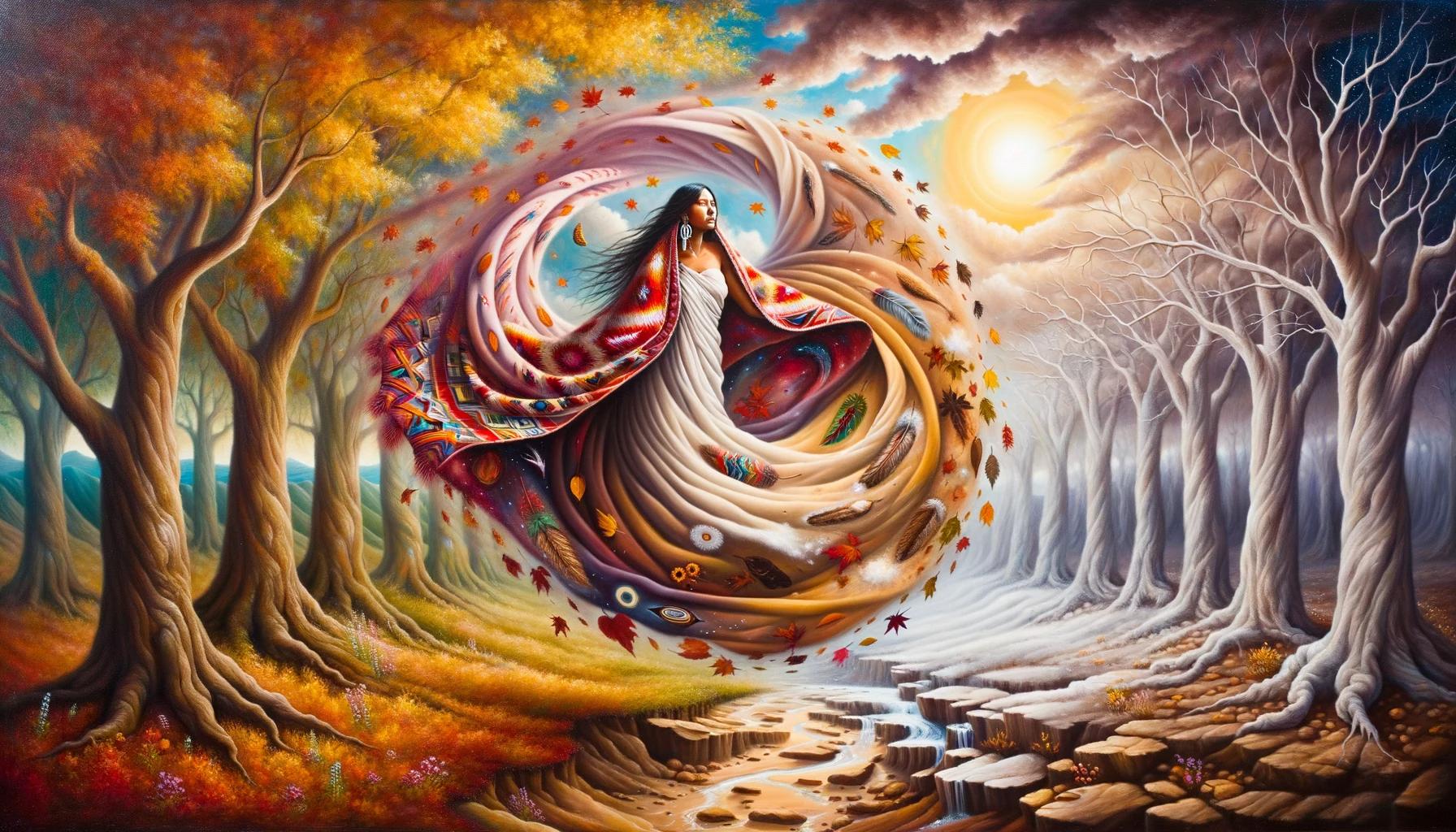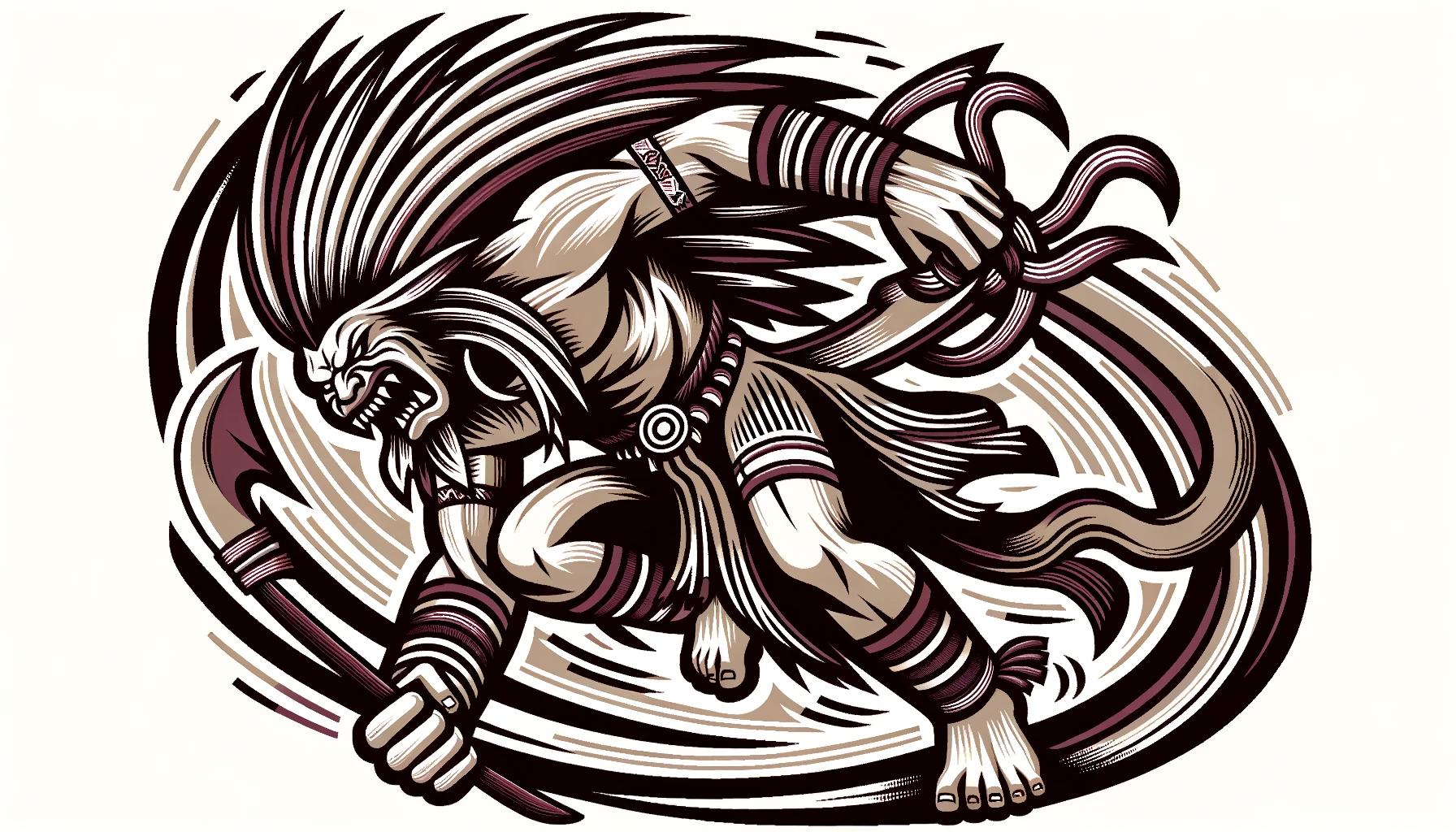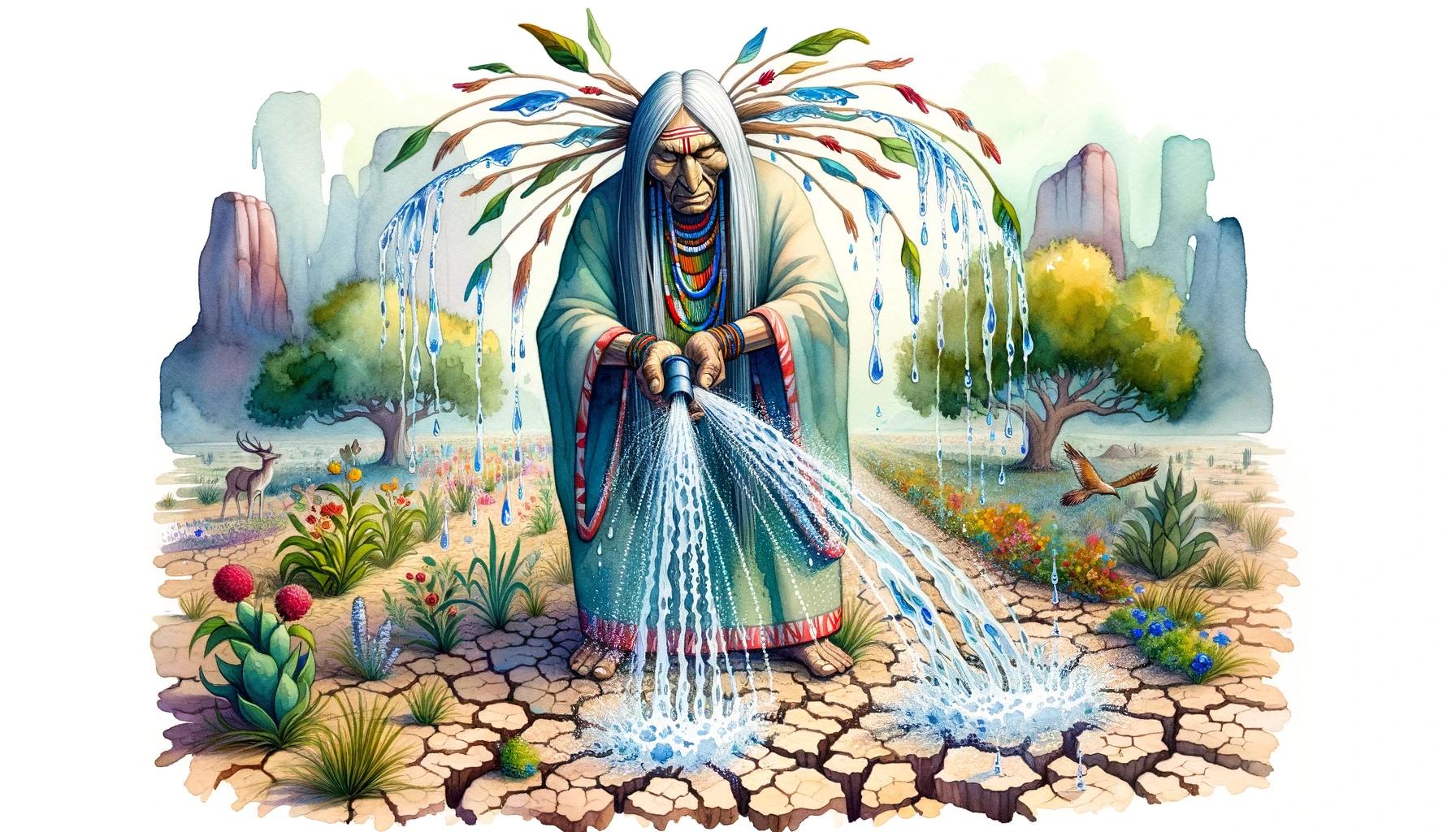White Shell Woman Navajo: Unveiling the Mysteries of a Sacred Figure in Native American Tribes

White Shell Woman Navajo, a significant figure in Native American mythology, holds a special place among the Navajo, Zuni, and Apache tribes. Her profound role in creation stories and spirituality is revered by these tribes.
White Shell Woman, also known as Yoolgai asdzáá, is believed to bring hope, protection, and a connection between humans and the divine. Her symbolism is tied to eagles, rattles, and the color white.
Through rituals like the Eagle Dance and everyday practices, the community celebrates and honors White Shell Woman’s presence in their lives. Discover the mysteries surrounding this powerful figure.
The Significance of White Shell Woman Navajo in Native American Mythology
White Shell Woman Navajo holds immense importance in the mythology of Native American tribes, particularly the Navajo, Zuni, and Apache.
She is a revered figure associated with creation stories and spirituality, symbolizing hope, protection, and the connection between humans and the divine.
The Creation Story of White Shell Woman
According to the Navajo creation story, White Shell Woman is the sister of Changing Woman and the wife of Water. She came into existence when the Talking God and the Wind breathed life into two shells.
Choosing a mountain stream as her companion, White Shell Woman gave birth to two sons who grew up to protect the earth from monsters. In some versions, White Shell Woman and Changing Woman are even depicted as the same character.
The Role of White Shell Woman in Navajo Culture
Within Navajo culture, White Shell Woman holds a significant role as one of the ancestors of the Navajo people. When she decided to live on her own, the Talking God and other deities visited her and created a man and a woman using corn covered in sacred blankets.
These individuals, along with descendants of Changing Woman, became the ancestral lineage of the Navajo people.
White Shell Woman in Zuni and Apache Legends
White Shell Woman also features prominently in the mythology of Zuni and Apache tribes. In Zuni mythology, she is considered the ancestor of the Sun Father and resides with him in the West.
Her presence and symbolism contribute to the rich tapestry of their cultural narratives and spiritual beliefs.
Symbols and Associations of White Shell Woman Navajo
White Shell Woman Navajo embodies several symbols and associations that hold deep meaning within Native American culture.
White Shell Woman’s Connection to Eagles and Rattles
Eagles and rattles serve as powerful symbols of spiritual significance in relation to White Shell Woman Navajo. The eagle, revered for its strength and grace, symbolizes freedom, wisdom, and divine protection.
White Shell Woman’s connection to eagles represents her ability to bring guidance and enlightenment to those who seek it.
Rattles, on the other hand, hold ceremonial importance in Native American rituals and symbolize the power of sound and rhythm.
White Shell Woman’s association with rattles signifies her role as a catalyst for spiritual awakening and transformation.
The Color White and its Symbolic Meaning
The color white is deeply symbolic in the context of White Shell Woman Navajo. It represents purity, clarity, and spiritual illumination. White is associated with the divine and serves as a reminder of the interconnectedness between humans and the sacred realm.
White Shell Woman embodies the purity of intentions and the clarity of wisdom that can guide individuals towards a deeper spiritual understanding.
White Shell Woman’s Role in Bringing Hope and Protection
White Shell Woman Navajo holds a crucial role in bringing hope and protection to humanity.
She represents the promise of unity between humans and the gods, offering solace in challenging times. As a transformative figure, she provides guidance and shields individuals from harm, offering a sense of security and strength.
Overall, the symbols and associations related to White Shell Woman Navajo encompass her connection with eagles and rattles, the symbolic meaning of the color white, and her role in bestowing hope and protection upon those who seek her guidance.
Rituals and Practices Honoring White Shell Woman Navajo
Discover the sacred rituals and practices that honor White Shell Woman Navajo, a revered figure in Native American mythology. These traditions, passed down through generations, symbolize the deep connection between humanity and the divine.
The Eagle Dance: A Sacred Ritual of the Pueblos
The Pueblos in New Mexico perform the Eagle Dance as a sacred ritual to honor White Shell Woman Navajo. This powerful dance is performed in the spring, embodying the spirit of the eagle and seeking blessings of rain and success in challenging times.
The rhythmic movements of the dancers symbolize the unity between humans and the divine, invoking the protective and guiding presence of White Shell Woman.
Incorporating White Shell Woman into Everyday Life
Beyond formal rituals, individuals can incorporate the essence of White Shell Woman into their daily lives.
By cleaning their homes with a feather duster, reminiscent of the eagle’s feathers, while holding the hope of White Shell Woman in their hearts, they invite her protection and bring forth positive energy.
This simple act serves as a reminder of the sacredness present in everyday life and the connection to the divine.
Creating White Shell Woman Dreamcatchers and Happiness Amulets
To deepen their connection with White Shell Woman, individuals can create dreamcatchers and happiness amulets inspired by her symbolism. For a White Shell Woman dreamcatcher, take four strips of fabric in elemental colors or seven in rainbow colors, and sew them together to form a blanket or portable cloth.
This dreamcatcher acts as a symbol of protection, filtering out negative energies and allowing only positive dreams and visions to pass through.
Similarly, happiness amulets can be made by infusing love and joy into every stitch.
These amulets serve as tangible reminders of the presence of White Shell Woman and her promise of protection and happiness. Bless the amulet with the words, ‘Love and joy in every stitch bring me only happy dreams.
White Shell Woman, shine throughout the night. Protect me until the first ray of morning light.’
Incorporating these rituals and practices into daily life fosters a deeper connection with White Shell Woman Navajo, a transformative figure representing hope, protection, and the union between humanity and the divine.
White Shell Woman Navajo: Uniting Humans with the Divine
White Shell Woman Navajo holds a profound role in the mythology and spirituality of Native American tribes, serving as a unifying force between humans and the divine. She is seen as a transformative figure, symbolizing the power to bring about positive change and growth.
White Shell Woman as a Transformative Figure
White Shell Woman is revered as a transformative figure, capable of bringing profound changes and blessings to individuals and communities. She represents the potential for personal growth, healing, and the fostering of harmonious relationships.
By connecting with White Shell Woman, one can tap into the transformative power she embodies, seeking guidance and embracing positive transformation in their own lives.
The Role of White Shell Woman in the Navajo Creation Story
In the Navajo creation story, White Shell Woman plays a crucial role as the sister of Changing Woman and the wife of Water.
She is one of the beings created by the Talking God and the Wind, and her choice to reside near a mountain stream signifies her deep connection to nature and life-giving forces.
Through her descendants, she becomes an ancestor of the Navajo people.
White Shell Woman’s Promise of Connecting Humans and Gods
White Shell Woman embodies the promise of bridging the gap between humans and the divine. She brings hope, protection, and spiritual guidance to humanity. By honoring and connecting with White Shell Woman, individuals can access a deeper understanding of their own spirituality and the divine forces that surround them.
She offers a path towards unity and harmony, allowing humans to find solace and inspiration in their connection with the sacred.
.











